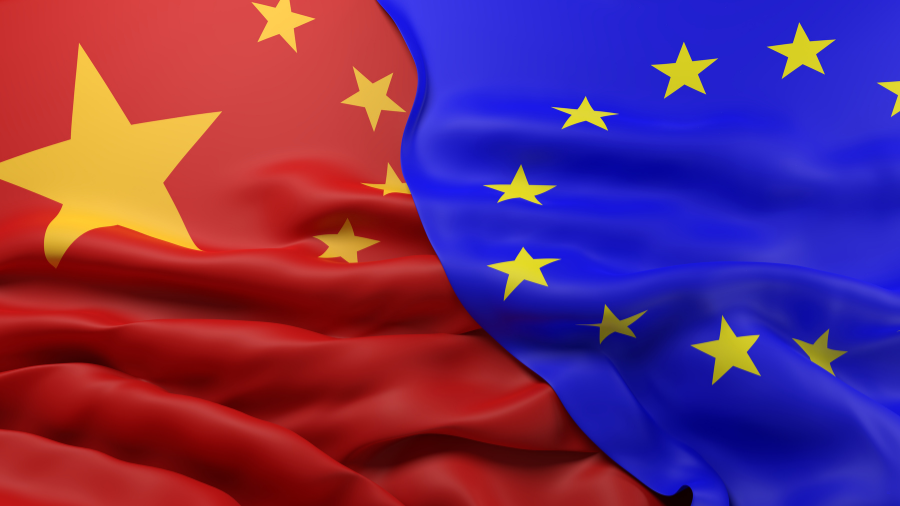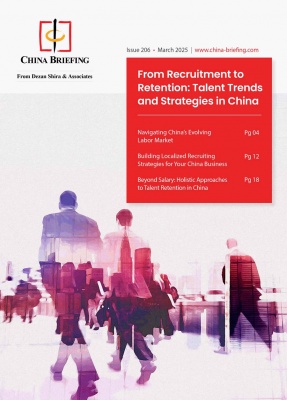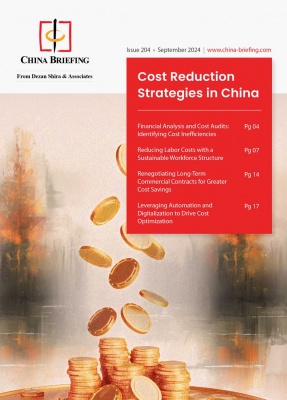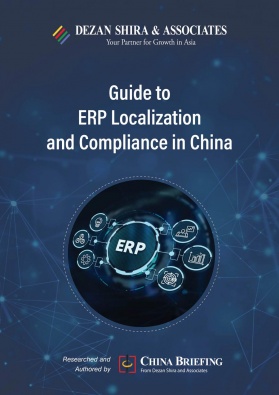China-Sweden Economic Relations: Trade, Investment, and Opportunities
- China and Sweden are each other’s largest trading partners in Asia and Northern Europe, with notable Swedish exports including pharmaceuticals, machinery, and transport equipment, while imports from China primarily consist of machinery and consumer goods.
- Swedish companies are focusing on sustainable growth in China, particularly in engineering, pharmaceuticals, and industrial innovation. Chinese investments in Sweden remain significant, especially in automotive and technology sectors, such as Zhejiang Geely’s acquisitions of Volvo Cars and AB Volvo.
- The evolving dynamics of Sweden-China relations present opportunities for Swedish firms to leverage China’s manufacturing strengths while exploring complementary markets in the Asia-Pacific region.
China and Sweden have shared centuries of interaction, from early trade exchanges in the 17th century to modern diplomatic and economic ties. Sweden was one of the first Western nations to recognize the People’s Republic of China in 1950, setting the stage for decades of cooperation and mutual interest. Today, their relationship stands at a crossroads, shaped by a mix of historic ties, robust trade, and modern challenges.
China is Sweden’s largest trading partner in Asia, while Sweden is a key player in Europe, providing Chinese businesses with access to advanced technologies, innovation hubs, and the broader EU market. Swedish industries, known for their emphasis on sustainability and precision engineering, are increasingly collaborating with Chinese firms to address global challenges like clean energy and smart infrastructure.
This partnership highlights the complementarity of their strengths: China’s vast industrial scale and demand for cutting-edge technologies meet Sweden’s focus on innovation, green solutions, and sustainable growth. Yet, as the two countries navigate differing political landscapes, their economic relationship continues to evolve, reflecting both opportunities and tensions.
In this article, we delve into the historical and contemporary dimensions of China-Sweden relations, exploring how their cooperation and competition are reshaping their shared economic landscape.
China-Sweden bilateral trade
Sweden and China maintain a dynamic trade partnership, with Sweden exporting a diverse range of goods to the Chinese market. According to the Swedish National Board of Trade, in 2023, Swedish exports to China (excluding Hong Kong) amounted to SEK 76.74 billion (US$7.03 billion), representing a year-on-year increase of 7.8 percent compared to 2022.
Sweden’s primary exports to China encompass chemicals, machinery, and transport equipment. The chemicals sector, including medicinal and pharmaceutical products, accounted for SEK 19.7 billion (US$1.80 billion) in 2023, marking a 12 percent growth from the previous year.
Manufactured goods and machinery were significant contributors, with machinery and apparatus exports totalling SEK 20.15 billion (US$1.84 billion). Key categories include internal combustion engines, rotating electric plant parts, and specialized machinery for industrial applications.
Exports of food, beverages, and tobacco saw a contraction, dropping by 8.9 percent in 2023 to SEK 1.01 billion (US$92.63 million). Similarly, crude materials and mineral fuels faced a mixed trend; while pulp and wastepaper exports surged by 62 percent in 2023, exports of iron ore and concentrates declined by 28 percent.
Manufactured products, particularly machinery and apparatus, remained vital to Sweden’s export profile to China. Transport equipment, including motor vehicles, accounted for SEK 12.85 billion (US$1.18 billion) in 2023, reflecting a 4.9 percent year-on-year increase. Notable items include motor vehicle parts and accessories, underscoring the interdependence of the automotive sectors in both nations.
| Sweden’s Top Exports to China, 2023 | |||
| Category | Value (SEK Billion) | 2023 YoY Change (%) | Share of Total Exports to China (%) |
| Chemicals and related products | 19.70 | +12 | 26.0 |
| Medicinal and pharmaceutical products | 13.56 | +18 | 17.7 |
| Machinery and apparatus | 20.15 | +6.6 | 26.0 |
| Transport equipment | 12.85 | +4.9 | 16.7 |
| Manufactured products | 37.20 | +6.3 | 48.4 |
| Iron and steel | 4.79 | -13 | 6.2 |
| Pulp and waste paper | 4.58 | +62 | 6.0 |
| Non-ferrous metals | 0.49 | +41 | 0.6 |
| Source: Swedish National Board of Trade | |||
In turn, in 2023, Sweden’s imports from China (excluding Hong Kong) reached SEK 117.33 billion (US$10.76 billion), reflecting a year-on-year decrease of 19 percent compared to 2022.
Sweden’s top imports from China were chemicals, machinery, and consumer goods. The chemicals sector, including plastics and pharmaceutical products, accounted for SEK 6.51 billion (US$596.81 million), a modest increase of 8.3 percent compared to the previous year. This category underscores China’s pivotal role as a supplier of intermediate industrial goods.
Machinery and apparatus represented Sweden’s largest import category, amounting to SEK 54.10 billion (US$4.96 billion) in 2023, despite an 11 percent decline from 2022. Key imports included electrical machinery, automatic data-processing machines, and telecommunications equipment, such as mobile devices and network infrastructure components.
Consumer goods, including articles of apparel and footwear, were also notable, with imports of clothing amounting to SEK 11.39 billion (US$1.04 billion) and footwear valued at SEK 1.71 billion (US$156.76 million). However, these categories faced significant year-on-year contractions of 28 percent and 35 percent, respectively.
Transport equipment imports, including motor vehicles and their parts, totalled SEK 4.99 billion (US$457.50 million), a decrease of 21 percent compared to 2022. This decline reflects adjustments in Sweden’s automotive market supply chain and demand dynamics.
| Sweden’s Top Imports from China, 2023 | |||
| Category | Value (SEK Billion) | 2023 YoY Change (%) | Share of Total Exports to China (%) |
| Machinery and apparatus | 54.10 | -11 | 46.1 |
| Chemicals and related products | 6.51 | +8.3 | 5.6 |
| Articles of apparel and clothing | 11.39 | -28 | 9.7 |
| Transport equipment | 4.99 | -21 | 4.2 |
| Manufactured goods (e.g., textiles) | 37.20 | -14 | 31.7 |
| Footwear | 1.71 | -35 | 1.5 |
| Plastics and articles thereof | 2.01 | -26 | 1.7 |
| Toys, games, and sporting goods | 3.49 | -38 | 3.0 |
| Source: Swedish National Board of Trade | |||
Overall, while trade volumes in 2023 saw a contraction, China’s position as a critical supplier to Sweden, particularly in advanced machinery, consumer goods, and chemical products, underscores the continuing significance of bilateral trade between the two nations.
2024 trade outlook
In the first three quarters of 2024, Sweden’s exports to China amounted to SEK 58.47 billion (US$5.36 billion), a 5.2 percent increase compared to the same period in 2023. This growth was led by a 25 percent surge in the medicinal and pharmaceutical segment, while traditional sectors like iron and steel also demonstrated resilience with a 32 percent rise.
Meanwhile, Sweden’s imports from China reached SEK 92.19 billion (US$8.45 billion) from January to September 2024, reflecting a modest 5.1 percent increase compared to the same period in 2023. This growth was primarily driven by a 74 percent surge in the electrical machinery and apparatus category, underlining the rising demand for advanced electronic components and equipment.
Despite this overall growth, several key sectors faced significant contractions. Imports of articles of apparel and clothing dropped by 28 percent, while transport equipment saw a 21 percent decline, highlighting shifting trade patterns. Machinery and apparatus, the largest import category, experienced an 11 percent decrease, contributing SEK 54.10 billion (US$4.96 billion) to total imports.
These trade figures underline the mutual economic benefits and evolving trade dynamics between Sweden and China. As both nations continue to navigate global market trends, their economic relationship remains pivotal in shaping regional trade patterns.
China-Sweden bilateral investment
Bilateral investment between China and Sweden has evolved significantly, marked by growing economic interdependence and the pursuit of mutually beneficial opportunities. Sweden has focused on leveraging its strengths in innovation and sustainability to deepen its presence in China’s market. Swedish companies have invested heavily in sectors such as advanced manufacturing, pharmaceuticals, telecommunications, and retail, showcasing a commitment to long-term engagement.
At the same time, China has shown interest in Sweden’s technology sector, clean energy initiatives, and infrastructure development, reflecting a shared focus on sustainable growth. Both countries continue to explore opportunities in emerging sectors like green technology and digital transformation, highlighting the forward-looking nature of their economic relationship. This dynamic exchange demonstrates the enduring value of collaboration in driving innovation and addressing global challenges.
In terms of foreign direct investment (FDI), China is not one of Sweden’s top investors, though certain sectors have attracted interest. Chinese investments in Sweden amounted to 2.41 percent of the country’s GDP, with the automotive, industrial machinery, health, biotechnology, and ICT sectors receiving the most attention. Notably, Zhejiang Geely’s acquisitions of Volvo Cars and a stake in AB Volvo represent some of the largest Chinese investments in Sweden.
While Sweden has been cautious about Chinese investment, it has adopted screening mechanisms for foreign investments in sectors concerning national security. However, despite the cooling of political relations, Sweden remains an attractive destination for Chinese capital, particularly in high-tech industries, though the broader geopolitical context continues to shape the investment landscape.
Sweden has demonstrated a proactive approach to fostering international trade, investment, and infrastructure development, aligning these efforts with its broader economic objectives. A key aspect of this strategy has been its strong economic engagement with China. By the end of 2023, Swedish companies had invested in 1,918 projects in China, with a total utilized investment of $6.88 billion. This underscores the depth of bilateral economic ties and Sweden’s commitment to leveraging its innovation-driven industries in one of the world’s most dynamic markets. Leading Swedish companies like Electrolux, SKF, AstraZeneca, Ericsson, and IKEA have established a significant presence in China, reflecting the mutually beneficial nature of this partnership.
This engagement aligns seamlessly with Sweden’s updated 2019 export strategy, which seeks to increase exports, encourage SME participation in global markets, and promote sustainable and fair international trade. By harnessing its strengths in innovation and sustainability, Sweden aims to enhance its companies’ global competitiveness, a goal that is evident in its success within the Chinese market. Additionally, Sweden’s trade policy, “Building a Better World,” introduced in 2022, emphasizes adapting to global challenges like climate change and digital transformation—factors that resonate with China’s own developmental priorities.
Sweden’s commitment to fostering trade and investment is underpinned by robust infrastructure development at home. Through initiatives like the 2018-2029 National Infrastructure Plan and the 2021-2033 Infrastructure Development Plan, Sweden has allocated over SEK 1.4 trillion to modernize its transport systems and support sustainable growth. This infrastructure push not only bolsters Sweden’s domestic economy but also enhances its capacity to engage in global trade effectively.
By combining its forward-looking trade strategies, strong innovation base, and extensive infrastructure investments, Sweden positions itself as a key partner for China, contributing to shared goals of economic development, sustainability, and global connectivity. This collaboration exemplifies how a nation can balance domestic growth priorities with active and meaningful participation in international markets.
Trade and investment agreements
China-Sweden bilateral investment agreement
In 1982, Sweden and China signed the Agreement on Mutual Protection of Investments, designed to promote and protect investments between the two countries. The agreement emphasizes fairness and equity for investors, establishing clear protections and dispute resolution mechanisms to encourage economic cooperation. Key provisions of the agreement include:
- Investment protection: The agreement ensures that investments made by either country’s investors are not subject to expropriation or nationalization, except for public interest purposes, and provides for prompt, adequate compensation.
- Fair and equitable treatment: Investments from either country are guaranteed treatment no less favorable than that afforded to investments from third-party states. The agreement also allows for preferential treatment under certain trade agreements, including customs unions or free trade areas.
- Transfer of funds: Both governments agree to allow the free transfer of investment-related earnings, including profits, dividends, and proceeds from liquidation, in any convertible currency, ensuring smooth and efficient financial operations.
- Dispute resolution: The agreement provides multiple mechanisms for resolving disputes, including negotiation, domestic legal processes, and international arbitration. It allows investors to seek arbitration through international bodies like the International Centre for Settlement of Investment Disputes (ICSID) or UNCITRAL rules.
- Arbitration and enforcement: If a dispute arises that cannot be settled amicably, investors may choose arbitration, and the resulting awards are binding and enforceable in the territory of both countries.
This agreement paved the way for increased Swedish investments in China and vice versa, contributing to the expansion of bilateral economic ties and fostering a stable and secure investment climate for both countries.
China-Sweden double taxation avoidance agreement
The Double Taxation Agreement (DTA) between China and Sweden is designed to prevent the risk of double taxation for individuals and businesses engaged in cross-border activities, promoting bilateral economic relations. The DTA, which has been in force since January 1, 2007, and amended in 2017, addresses income tax issues between the two countries, ensuring that neither country taxes the same income more than once.
The China-Sweden DTA covers income taxes imposed by both contracting countries, including:
- China: Individual income tax (IIT) and corporate income tax (CIT);
- Sweden: Income tax for both individuals and corporations.
The agreement outlines mechanisms to allocate taxing rights on various types of income, thus providing certainty to investors and individuals engaged in cross-border activities.
Under the DTA, the concept of “permanent establishment” is crucial in determining tax liability. A permanent establishment arises when a business operates in the other country for more than 183 days within a 12-month period through employees or hired personnel. This provision ensures that businesses are only taxed in a country where they have a significant presence, preventing excessive taxation of income from short-term engagements.
The DTA sets reduced withholding tax rates for certain income types, reducing the tax burden on cross-border transactions:
- Dividends: Generally taxed between 5 percent and 10 percent, with the lower rate (5 percent) applying when the beneficial owner of the dividend is a company (rather than a partnership) that directly holds at least 25 percent of the capital of the paying company.
- Interest: Typically taxed at 10 percent.
- Royalties: Generally taxed at 6 percent.
These reduced rates aim to facilitate smoother investment flows and reduce the tax costs associated with cross-border income.
The DTA outlines how capital gains are taxed in both countries. Specifically, gains from the sale of immovable property can be taxed in the country where the property is located. Additionally, gains from the sale of shares or interests in companies where a substantial portion of the value derives from immovable property in the other country are also subject to taxation by that country.
To prevent double taxation, the DTA allows relief through either the credit method or exemption method, depending on the country:
- China: Primarily uses the credit method, where taxes paid abroad are credited against the domestic tax liability.
- Sweden: Generally applies the exemption method, which exempts foreign income from Swedish tax, provided certain conditions are met. However, Sweden may also apply the credit method in some instances.
The DTA includes an anti-abuse provision that denies benefits if the primary purpose of a transaction is to obtain tax advantages under the agreement. This ensures that the provisions are used for legitimate economic activities and not for tax avoidance.
Multilateral treaties
China and Sweden, both members of the WTO, are signatories to various multilateral treaties concerning trade and investment. These include:
- The Agreement on Trade-Related Aspects of Intellectual Property Rights (TRIPS), which mandates WTO members to extend intellectual property rights to owners in any member state. It incorporates a most-favored-nation (MFN) clause, ensuring equal treatment for IP rights protection across all member countries. Additionally, it provides mechanisms for dispute resolution and compensation.
- The Agreement on Trade-Related Investment Measures (TRIMs), which prohibits the implementation of investment measures that restrict trade between members. This includes measures like local content requirements, which mandate the use of locally-produced goods or services by companies operating in a market.
- The General Agreement on Trade in Services (GATS), which grants most-favored-nation status to service providers of any WTO member, excluding governmental services such as social security, public health, education, and certain services related to air transport.
Outlook and opportunities
The evolving dynamics of Sweden-China relations offer a blend of opportunities and challenges, particularly in the realm of strategic investments and bilateral cooperation. Despite growing global uncertainties and geopolitical tensions, Swedish multinational corporations (MNCs) continue to prioritize China as a vital market. The focus has shifted towards sustainable growth through “China-for-China” strategies, emphasizing localized production and supply chains tailored to the Chinese market. This approach not only mitigates risks but also leverages China’s unique strengths in cost efficiency, innovation, and manufacturing quality, ensuring Swedish firms remain competitive in the region.
Key sectors driving Swedish investments in China include advanced engineering, medical and pharmaceutical products, and industrial innovation. Swedish companies are deepening collaborations in these areas, underscoring the importance of bilateral ties. For example, engineering products constitute nearly half of Sweden’s exports to China, while pharmaceuticals and raw materials like wood and iron ore form a significant part of the trade portfolio. On the import side, Chinese supply chains continue to dominate with industrial products and textiles, offering Swedish businesses unmatched scalability and speed. As Swedish firms expand operations, they are also exploring complementary opportunities in other APAC nations like India and Vietnam, balancing risk management with growth ambitions.
In this nuanced landscape, the bilateral cooperation between Sweden and China remains robust. Approximately 10,000 Swedish companies engage in trade with China, supported by a shared commitment to fostering innovation and enhancing industrial synergies. With strategic localization and diversification, Swedish businesses are well-positioned to capitalize on the opportunities presented by China’s vast consumer base and economic potential, while strengthening resilience against global disruptions.
About Us
China Briefing is one of five regional Asia Briefing publications, supported by Dezan Shira & Associates. For a complimentary subscription to China Briefing’s content products, please click here.
Dezan Shira & Associates assists foreign investors into China and has done so since 1992 through offices in Beijing, Tianjin, Dalian, Qingdao, Shanghai, Hangzhou, Ningbo, Suzhou, Guangzhou, Haikou, Zhongshan, Shenzhen, and Hong Kong. We also have offices in Vietnam, Indonesia, Singapore, United States, Germany, Italy, India, and Dubai (UAE) and partner firms assisting foreign investors in The Philippines, Malaysia, Thailand, Bangladesh, and Australia. For assistance in China, please contact the firm at china@dezshira.com or visit our website at www.dezshira.com.
- Previous Article New Guide for Cross-Border Personal Data Transfers in the GBA: A Roadmap for Compliance and Security
- Next Article Encouraged Catalogue for Western China 2025: Trends and Opportunities


























